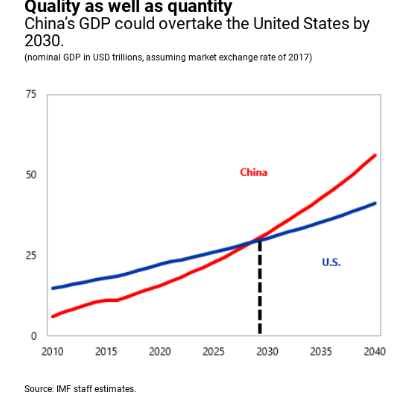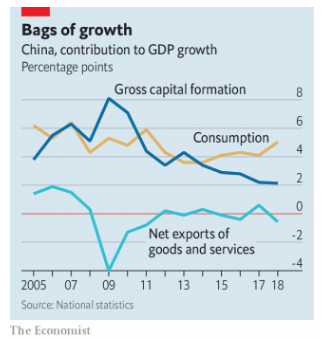External Trade Matters Less To China’s Economy Than In The Past
China’s overall trade surplus has been declining, and last year the shrinking foreign trade surplus reduced China’s GDP growth in 2018 by a half a percentage point relative to growth in the previous year. Domestic demand more than plugged the trade shortfall (see the second chart).
Consumer spending accounted for three-quarters of China’s economic growth in 2018, its highest contribution since 2000.
China posted a total trade surplus of USD $351.76 billion in 2018, its lowest since 2013, as exports increased 9.9% (its strongest performance in seven years), while imports were up 15.8%.
However, the politically-sensitive trade surplus with the US widened 17.2% to USD $323.32 billion last year, the highest on record.
China’s planned economic restructuring represents a shift in focus from high-speed growth to high-quality growth. As an IMF report highlights, the refocus represents not only a shift in emphasis towards domestic consumption and away from a reliance on investments and exports but also improving the credit and debt positions of China’s State-owned organizations.
As the following chart illustrates, even as China’s economy continues to slow in the direction of the average growth rates of the advanced nations, China could become the world’s largest economy in nominal terms by 2030.
(Click on image to enlarge)

(Click on image to enlarge)

Disclosure: None.



